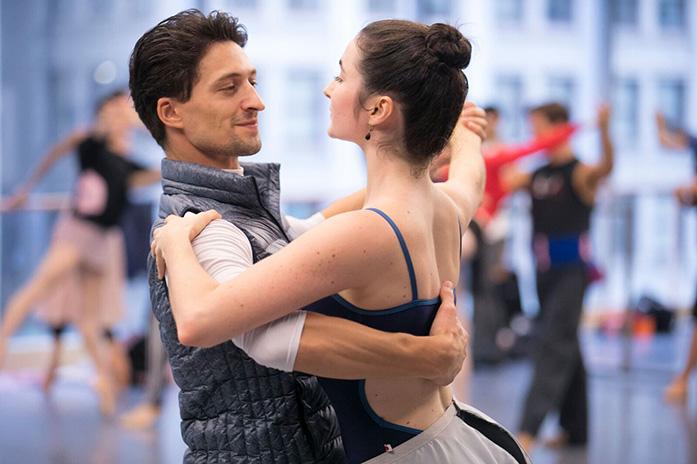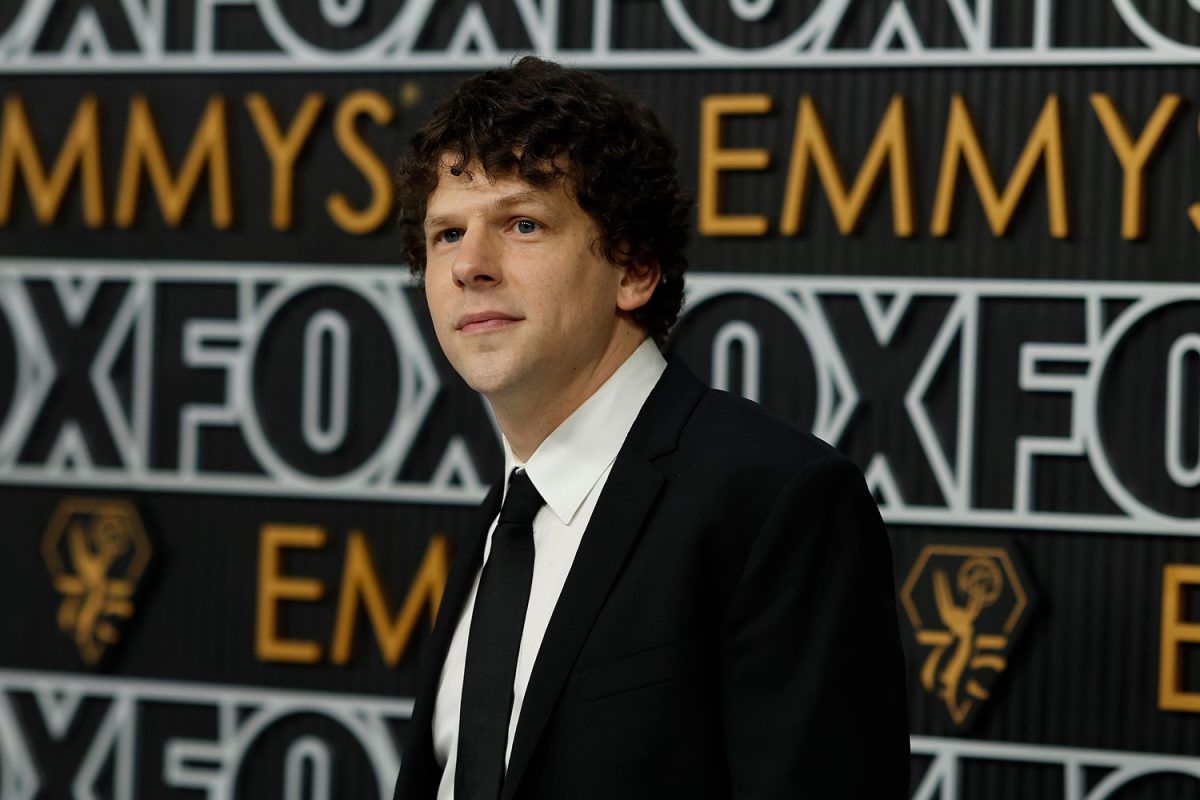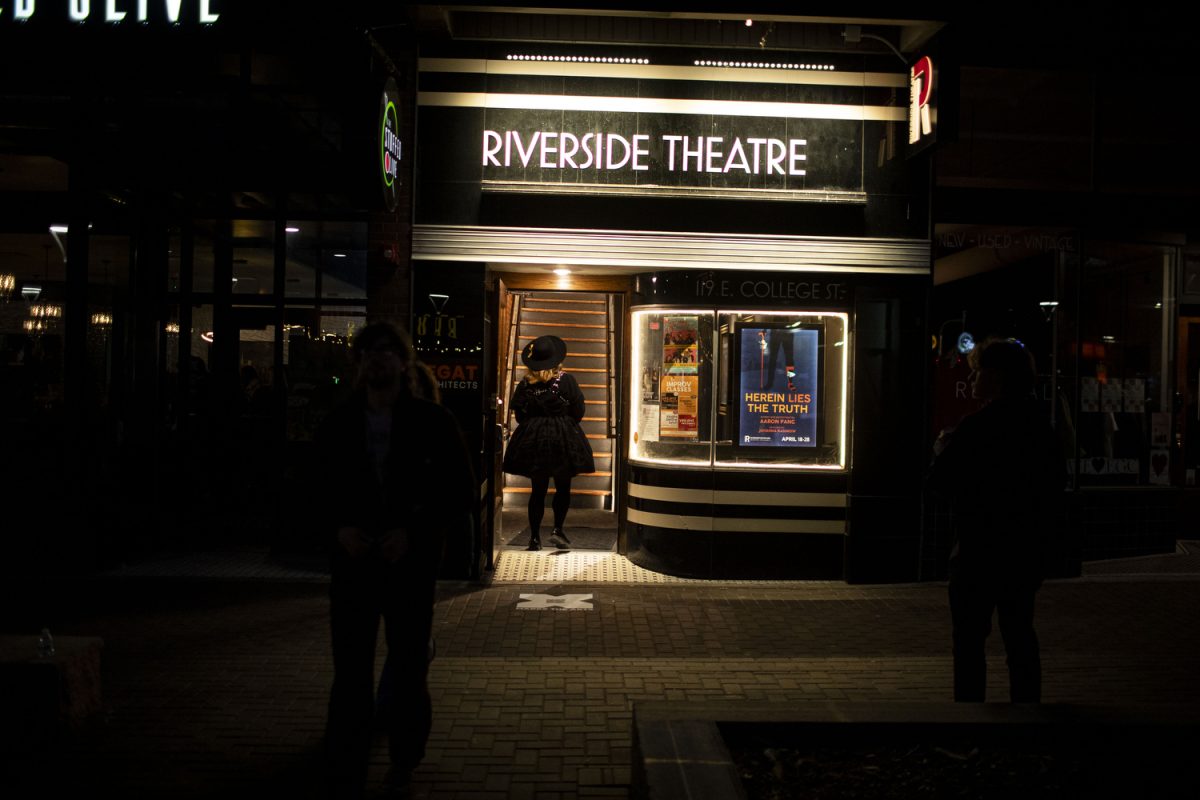By Tessa Solomon
In a wooden shack on the edge of the 1893 Chicago World’s Fair, Marie, a young Polish girl, a daughter of immigrant workers, dreams of the White City’s splendor. Her longing eventually sees her embark on a fantastic journey through a surreal fair, one populated by Chinese dragons, paisley-clad belly dancers, and waltzing snowflakes.
Classic characters and reinvigorated dance converge in this vision, realized in Tony-Award winning choreographer Christopher Wheeldon’s reinterpretation of the Joffrey Ballet’s The Nutcracker. Nearly a decade in development, the holiday tale will take the stage for the first time this weekend at Hancher, with Tchaikovsky’s iconic score performed live by Orchestra Iowa.
“There is a lot of great history in Chicago; the World’s Fair was one of the things that changed many things in America,” said Joffrey Artistic Director Ashley Wheater.
At the fair in 1893, 27 million people witnessed not only the unveiling of revolutionary inventions — the Ferris wheel, light bulbs, chewing gum — but also a blazing emergence of American exceptionalism, a statement that this multinational settlement could, perhaps, form one unified identity. In today’s political and cultural climate, that 19th-century foundation, built through the labor of immigrants such as Marie and her working-class family, seems more relevant a through line than that of the ballet’s original wealthy protagonist.
With Wheater and Wheeldon at the helm of the Brian Selznick-penned reworking, the aged production — one plagued with a threadbare wardrobe and peeling set pieces — has now found new life in the city of Chicago.
In the production’s opening “credits,” projections display newspaper reels from the era, casting headlines announcing the plight of the working class across the industrial-theme set.
“We didn’t set out two and half years ago to make a politically relevant nutcracker, but it feels so now in a way,” Wheeldon said. “We wanted to shift the focus to deeper, more meaningful aspects of the family and of the community. Not making it just about a privileged child who dreams of more privilege.”
It’s doubtful whether Tchaikovsky had the youths of Chicago on his mind during the original arrangement, but in a contemporary cast that boasts more than 60 child dancers, the new generation has undeniably become a priority. This new appeal marks a stark reversal from the nature of the original production, which Wheater noted often missed the mark with the many members of the younger crowd.
“In Chicago, we bring 7,000 kids to The Nutcracker from Chicago public schools, and they love it, but the actual story has no relationship to them,” Wheater said. “A lot of them don’t have happy homes or come from dysfunctional families.”
While the first act employs a noticeably grittier approach than was commonplace in previous productions, those dedicated to the classic interpretation will find solace in the second act’s more traditional structure.
“When it came time to design, we knew that we wanted to deliver what people want from The Nutcracker,” said scenic designer Julian Crouch. “It was a case of deciding where to be true to the research and where to push the fantasy and poetic license.”
Inhabiting the dream-like White City are familiar — though reimagined — characters such as Drosselmeyer (renamed the Great Impresario), the Sugar Plum Fairy, and the army of mice. In the production, under the hand of master puppeteer Basil Twist, the white-and-gray mouse army will charge across the stage outfitted in realistic coconut fiber husks, while a black 63-foot-long cloth dragon — controlled by dancers hidden inside its torso — will inhabit the fair’s Chinese pavilion.
Borrowing heavily from independent productions and the ever-changing trends present in the world of modern dance, the vocabulary of classical ballet also gains a contemporary flair in this new production, creating what Wheater considered a dance style lacking one cohesive theme but still chock-full of stylistic flourishes.
“[Wheeldon’s] choreographic language is incredibly beautiful,” Wheater said. “How we dance today is very different than how we danced in 1920. I found the old production was static; our language is richer, there’s so much more to step into it.”
The first act reflects the styles of dance present in communities of Eastern European immigrants, many of whom helped construct the fair for a richer audience. Based on Eastern folk dance, the dancers’ movements in this segment carry with them a singular style.
“I was telling [the dancers] the other day that they have to feel like they are a community that has grown up with dance,” Wheeldon said. “They dance to express themselves and in these gatherings that music and dance is how they find joy in an otherwise fairly bleak existence.”
In a public panel in Hancher on Monday night, Wheeldon iterated the sense of purpose he attempted to instill in every dancer in the prodigious cast, from lead April Daly to the cast’s accompanying children.
“I said to [a child performer] the other day, ‘Look, if you don’t know what to do, just pretend you have head lice,’ ” Wheeldon said, sparking laughter from the crowd in attendance. “You’re a street urchin, so you probably do have head lice. When you’re idling for a minute, just start to itch.”
Early in the night, Crouch noted the daunting responsibility present in the process of reshaping something held as sacred as The Nutcracker. The weight of the ballet’s long history of reinterpretation — ranging from Rudolf Nureyev’s seminal 1963 production at the Royal Ballet to Disney’s Fantasia — is hefty. The lofty goals of this ambitious undertaking seem best encapsulated by Wheater.
“All we want,” he said, “Is to make sure we have a future generation that loves the art form as much we do.”







